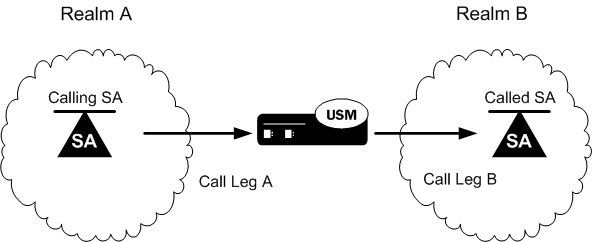About Number Translation
Oracle® Enterprise Session Border Controller number translation is used to change a layer-5 endpoint name according to prescribed rules. Number translations can be performed on both the inbound and the outbound call legs independently, before and after routing occurs.
Number translation takes place twice for SIP calls. The first number translation is applied to the incoming leg of the call, before the outgoing route is selected. The second number translation is applied to the outgoing leg of the call after the outgoing route is selected.
Number translation can be used to strip address prefixes added by external gateways. It can also be used to add a string tag to an address in order to implement a local policy routing scheme, and then remove the tag upon egress from the Oracle® Enterprise Session Border Controller. The most common use of number translation is to add or remove a “1” or a + from a phone number sent from or addressed to a device.
Number Translation Implementation
Oracle® Enterprise Session Border Controller number translations are implemented in three steps. First, the individual number translation rules are defined in the translation rules subelement. Next, the established rules are grouped in a specified order to apply to calling and called numbers. This second step occurs in the session translation element. Finally, session translations are attached to either session agents or realms in the session agent element or realm configuration element.
Number translations attached to session agents take precedence over number translations attached to realms. If no number translation is applied to a session agent, then the Oracle® Enterprise Session Border Controller will use the number translation applied to a realm. If a number translation is applied to both a realm and session agent, the translation attached to the session agent will apply. If session agents and realms have no associated translations, then all numbers will remain in their original forms as they pass through the Oracle® Enterprise Session Border Controller.
Within each realm or session agent, the number translation is applied to either the incoming or outgoing call leg. This distinction between incoming and outgoing calls is made from the point of view of the Oracle® Enterprise Session Border Controller. The following diagram illustrates the number translation concept.

The following table displays which parameters to apply a session translation ID in order to affect the corresponding leg of the call as shown in the illustration.
| Leg | Calling SA | Called SA | Realm A | Realm B |
|---|---|---|---|---|
| A | IN Translation ID | N/A | IN Translation ID | N/A |
| B | N/A | OUT Translation ID | N/A | OUT Translation ID |
Number Translation in SIP URIs
Number translations only change the user portion of the URI. A typical SIP URI looks like sip:user@hostname. The user portion can take the form of either a phone number or any other string used for identification purposes.
Within the SIP header exists a Request URI, a To URI, and a From URI. The session translation element’s rules calling parameter modifies the From URI, while the rules called parameter modifies the Request URI and the To URI.
Session Translation in H.323 Messages
Because H.323 messages explicitly define the calling and called parties, the correspondence is exactly the same between the endpoints and configuration parameters. The H.323 calling party corresponds to the session translation element’s rules calling parameter. The H.323 called party corresponds to the session translation element’s rules called parameter.



